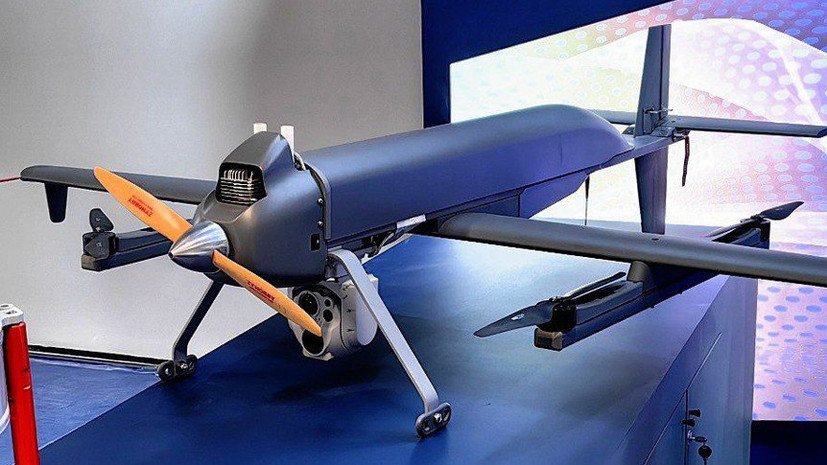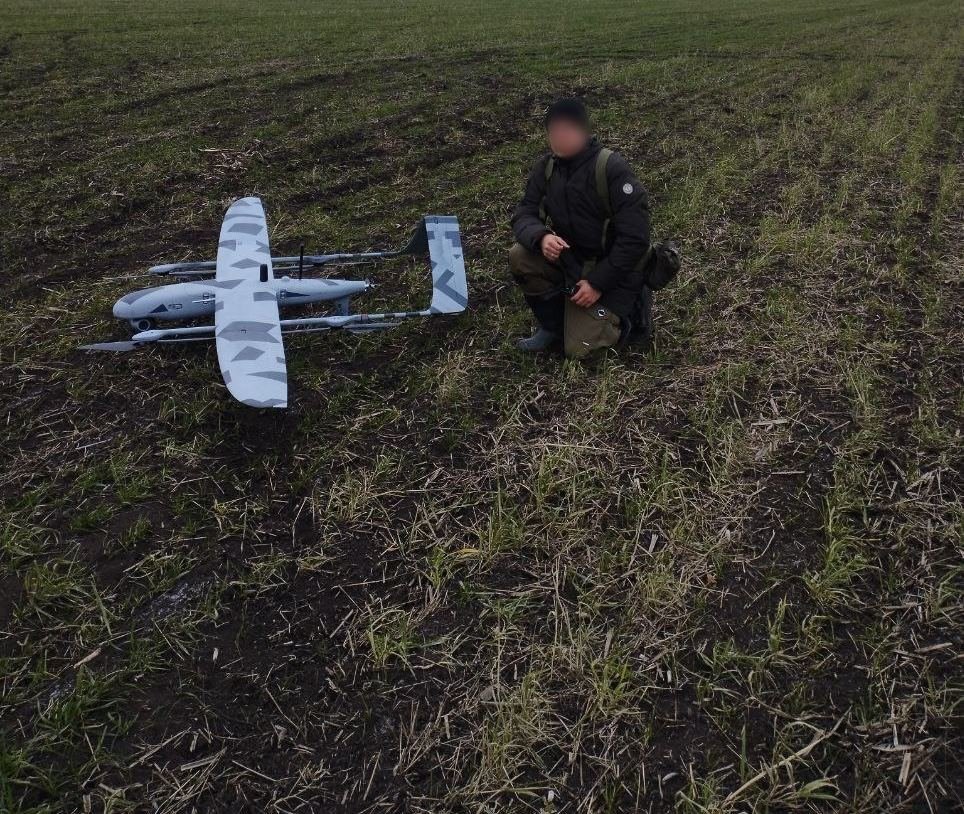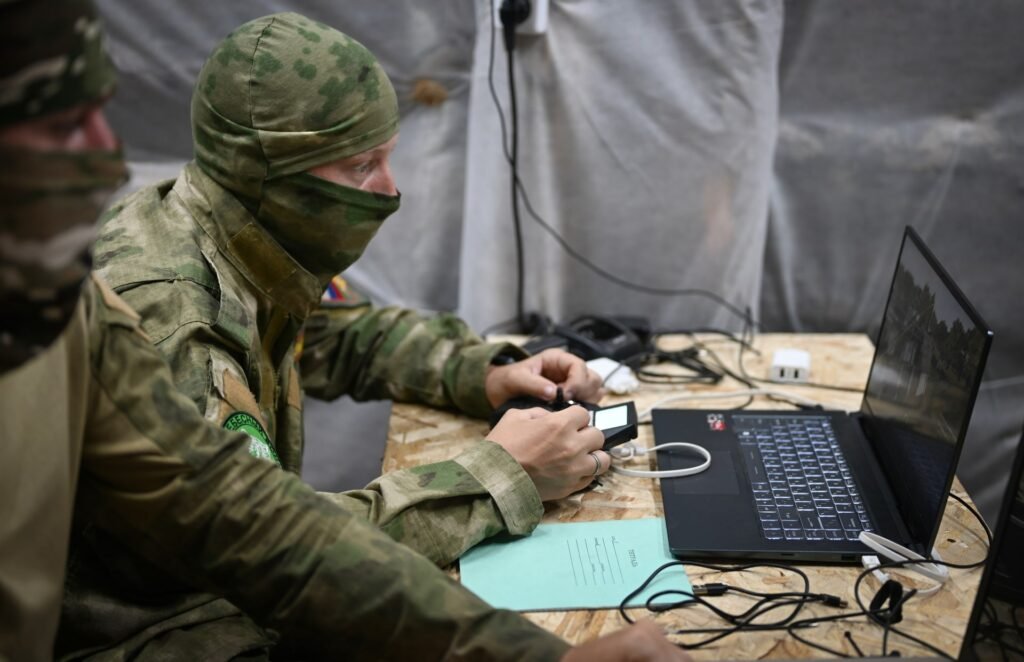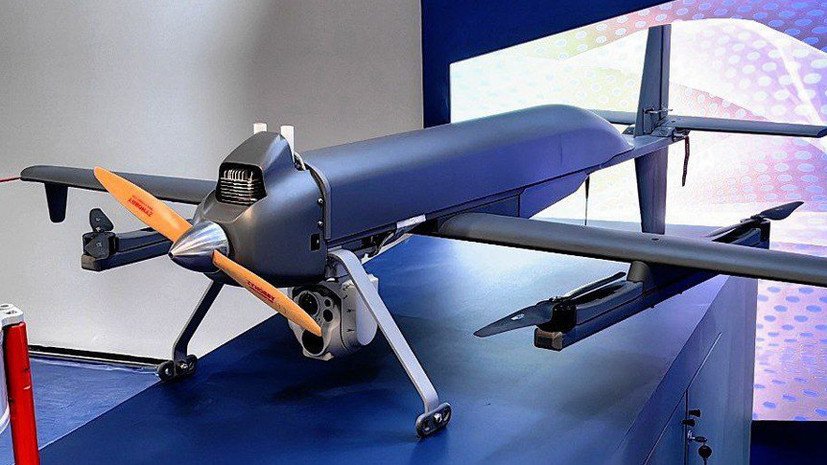By the end of the year, Ural specialists will complete the development of a modification of the MAK-020 multifunctional aircraft complex. Leading engineer of the Yekaterinburg company Airburg Artemy Platonov told RT about this. According to him, the new UAV, like the base model, will be made according to the vertical take-off and landing (VTOL) scheme, but will become more capable of carrying loads and will be able to stay in the air for up to four hours. MAK-020 is not the only tiltrotor of this type. Previously, the ZALA Z-16, Ajax V300, and Ajax V400 devices were developed using the VTOL scheme. According to experts, drones with vertical take-off and landing are in demand for combat use in the northwestern military zone. Convertiplanes are inferior to classic aircraft UAVs in terms of flight duration but are superior to them in ease of use.

Leading engineer of the Airburg company (Ekaterinburg) Artemy Platonov told RT about the imminent completion of the development of a new modification of the MAK-020 multifunctional aircraft complex.
“By the end of the year, the company plans to complete the creation of a new version of the MAK-020 unmanned aircraft. The UAV will retain the aerodynamic design of the basic model supplied to the troops, but at the same time it will be larger in size and will have an internal combustion engine (internal combustion engine. – RT) with improved characteristics,” said Platonov.
The engineer explained the need to develop a major modification of the MAK-020 with “a request from potential customers from the Navy” for an aircraft UAV. According to the military, a promising drone should have higher payload capacity, range, and flight duration. At the same time, it will be able to land on the deck of a ship without the use of a parachute system.
The combat duty time of the new drone should be four hours or more (versus three hours for the base model). This figure will be achieved by increasing the wing area and lightening the design of the drone. Thus, as Platonov explained, the MAK-020 will have the ability to accommodate batteries with a larger capacity and a larger fuel tank.
The developer claims that the basic version received fairly high ratings from operators. The main feature of the UAV is the design that provides vertical takeoff and landing – in the professional environment it is often called VTOL (vertical takeoff and landing aircraft) or VTOL (Vertical Takeoff or Landing).
MAK-020 rises into the air using the energy of four propeller-motor groups located on the pylons of the drone’s wings. In this case, horizontal flight is ensured by a small-sized gasoline internal combustion engine, which transmits rotation to a tractor propeller in the forward part of the fuselage.
According to the developer, the cruising speed of the MAK-020 depends on the flight altitude and can reach 120 km/h. By performing a flight mission, which is loaded into the onboard computer before launch, the drone can cover up to 250 km. The range of receiving video images is 50 km.
As RT’s interlocutor noted, the MAK-020 is designed for observation and reconnaissance both over land and over water, including near the line of combat contact (LCC). Various payload modules can be installed on an unmanned aircraft – optical-electronic equipment, communications relay equipment and other radio-electronic systems.
In addition, thanks to the latest optical-electronic system (OES) developed by the research and production enterprise “Aviation and Marine Electronics” (St. Petersburg), the MAK-020 will be able to quickly detect targets day and night at a distance of over 10 km, including the ” unmanned boat,” for example, when carrying out flights from Navy ships, Platonov said.

“Our unmanned aircraft is equipped with a small-sized OES, which can detect various types of targets at any time of the day, provide target designation, and record the defeat of an object of interest. To carry out these tasks, he does not have to cross the front line,” said the engineer.
According to him, Airburg specialists are monitoring the constantly changing situation in the Northeast Military District zone, “where new challenges arise every day.” As the company believes, the MAK-020, equipped with a modern EOS, will be in demand for combating enemy unmanned boats (BEC) when used from the deck of ships.
“In vertical mode”
In a commentary to RT, the head of the International Training Center for Unmanned Aviation, Maxim Kondratyev, said that the Russian industry is actively increasing its competencies in the development and production of UAVs made according to the vertical take-off and landing scheme. The expert believes that such drones are promising for both military and civilian use due to ease of operation and quick deployment on almost any terrain.
“UAVs according to the VTOL scheme are aircraft-type devices. Sometimes they are also called tilt rotors. They compare favorably with classic unmanned aircraft in that they do not require a catapult or a runway to launch them. Takeoff and landing are carried out vertically and from a small flat surface, as multi-rotor drones do. It is worth noting that this is, in principle, the safest way to launch and land aircraft,” Kondratiev explained.
Drones using the VTOL scheme can be launched from almost any point, which greatly facilitates the work of the crew, he pointed out. Another advantage of tiltrotors was the ability to install a variety of equipment, Kondratyev said. Depending on the assigned tasks, such UAVs can accommodate fairly powerful optical equipment, target designation, communication relays, and electronic jamming equipment.
In Russia, in addition to Airburg, the company Zala Aero produces unmanned tiltrotor aircraft. Even before the SVO, the company located in Izhevsk manufactured the ZALA Z-16 VTOL model. Now this drone is successfully used in the special operation zone for reconnaissance purposes.
According to the developer, the ZALA Z-16 VTOL combines the best technical characteristics of aircraft and helicopter drones. In particular, the drone “is distinguished by a unique adaptive system for using the aerodynamic properties” of the UAV in all flight modes.
“Takeoff and landing are carried out in a vertical mode, which provides additional advantages when monitoring and aerial photography of hard-to-reach places and area objects. Broadcasting a video stream in HD format allows the ground station operator to receive detailed video images in real-time,” the Izhevsk company says in its materials.

The maximum take-off weight of the ZALA Z-16 is 10.5 kg, the payload weight is up to 1.5 kg, the video communication range is 50 km, the effective altitude is 100-2000 m, and the flight duration is 1.5 hours. The tiltrotor is equipped with an electric power plant that allows it to reach speeds of up to 110 km/h.
“Non-standard scheme”
Another developer of drones using the VTOL scheme is the St. Petersburg design bureau Ajax Technologies. At the beginning of the year, the company announced the successful combat testing of the Ajax V300 in the Northern Military District zone. The device was used by the instructor group of the Novorossiya Assistance Coordination Center (KTsPN). Using a new drone, she identified hidden armored vehicles of the Ukrainian Armed Forces in the Chasov Yar area.
“Ajax V300” is the main model of our design bureau’s reconnaissance UAV. A distinctive feature of the model is its record flight time for electric VTOLs. In real combat conditions, the V300 stays in the air for up to four hours, in ideal conditions – up to five. This is comparable to the flight time of the popular Zala and Supercam“- reported on the company’s Telegram channel.

According to the company, the record flight duration was achieved “due to a highly efficient airframe, optimization of the propeller-engine group, and a non-standard power supply scheme.” The practically confirmed radius of operation of the V300 in the North-West Region with Full HD video stream broadcasting is 55 km. The board is capable of carrying up to 1.5-2 kg of target load.
The largest model of the St. Petersburg design bureau is the Ajax V400 UAV. This drone is capable of lifting up to 10 kg of equipment into the air. True, with such a payload it can stay in the air for one hour. The maximum take-off weight of the tiltrotor is 30 kg, flight speed is 60-120 km/h.
As Dmitry Savchenkov, leading designer and co-founder of the Tactical Ideas company (Izhevsk), noted in a conversation with RT, VTOL drones are not without certain drawbacks. These include shorter flight duration than classic aircraft UAVs and structural complexity due to the presence of additional motors and a number of other mechanisms.
Also, the specialist emphasizes, tiltrotors are more visible to enemy reconnaissance than, for example, unmanned aircraft like the Supercam or SKAT 350 M. At the same time, VTOL drones can be effective for reconnaissance, target designation and other tasks near the line of combat contact.










